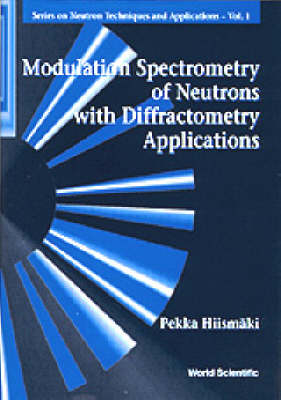
Modulation Spectrometry Of Neutrons With Diffractometry Applications
Seiten
1997
World Scientific Publishing Co Pte Ltd (Verlag)
978-981-02-2746-3 (ISBN)
World Scientific Publishing Co Pte Ltd (Verlag)
978-981-02-2746-3 (ISBN)
Modulation spectroscopy of neutrons refers to a measuring principle, characterized by classification of neutron histories in a probabilistic way, not the usual deterministic way. Covering this field, this volume includes pulsed modulation, fourier modulation, and pseudorandom modulation.
Modulation spectrometry of neutrons refers to a measuring principle, characterized by classification of neutron histories in a probabilistic way, not the usual deterministic way. In order to accomplish this, neutron beams entering the sample are modulated by high-transmission, white-beam selectors of the multislit type, such as Fourier or statistical choppers or high-frequency-modulated spin-flippers. In this scheme it is impossible to decide in a unique way through which particular slit any single neutron passed, but the distribution of histories for a large population of neutrons can nevertheless be correctly obtained, by classifying each conceivable history either as a high-probability or as a low-probability event, based on the actual observed state of the neutron selector. So far the principle has been successfully applied to powder diffraction, but it seems to offer extra degrees of freedom if applied to measuring dispersion curves of coherent excitations, such as phonons in single crystals.
Modulation spectrometry of neutrons refers to a measuring principle, characterized by classification of neutron histories in a probabilistic way, not the usual deterministic way. In order to accomplish this, neutron beams entering the sample are modulated by high-transmission, white-beam selectors of the multislit type, such as Fourier or statistical choppers or high-frequency-modulated spin-flippers. In this scheme it is impossible to decide in a unique way through which particular slit any single neutron passed, but the distribution of histories for a large population of neutrons can nevertheless be correctly obtained, by classifying each conceivable history either as a high-probability or as a low-probability event, based on the actual observed state of the neutron selector. So far the principle has been successfully applied to powder diffraction, but it seems to offer extra degrees of freedom if applied to measuring dispersion curves of coherent excitations, such as phonons in single crystals.
Historical review; statistical classification of modulation schemes; pulsed modulation; pseudorandom modulation; golay code modulation; Fourier modulation; reverse time-of-flight principle; powder diffraction application to crystallography; application to residual strain determination; prospects for spectroscopy of coherent excitations.
| Reihe/Serie | Series On Neutron Techniques And Applications ; 1 |
|---|---|
| Verlagsort | Singapore |
| Sprache | englisch |
| Themenwelt | Naturwissenschaften ► Physik / Astronomie ► Atom- / Kern- / Molekularphysik |
| Naturwissenschaften ► Physik / Astronomie ► Hochenergiephysik / Teilchenphysik | |
| ISBN-10 | 981-02-2746-9 / 9810227469 |
| ISBN-13 | 978-981-02-2746-3 / 9789810227463 |
| Zustand | Neuware |
| Haben Sie eine Frage zum Produkt? |
Mehr entdecken
aus dem Bereich
aus dem Bereich
Buch | Softcover (2024)
Wiley-VCH (Verlag)
59,90 €


